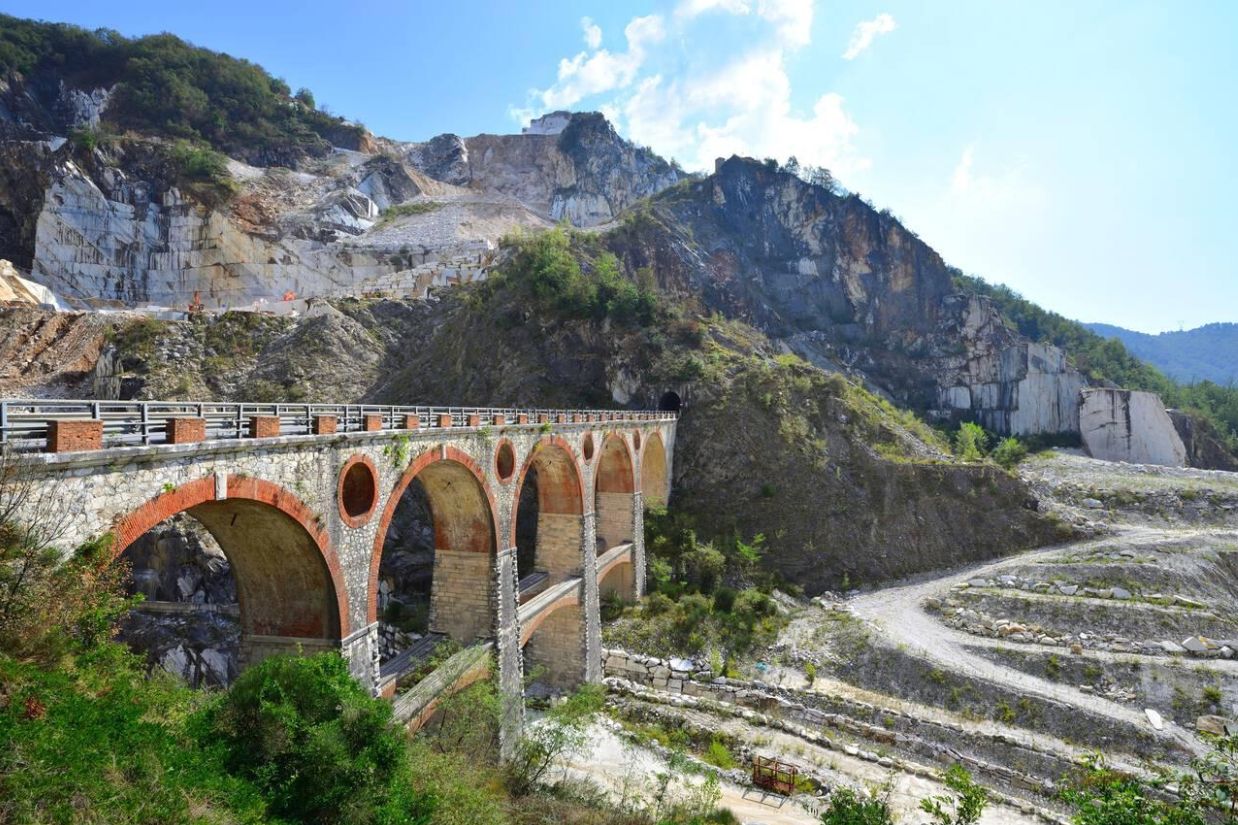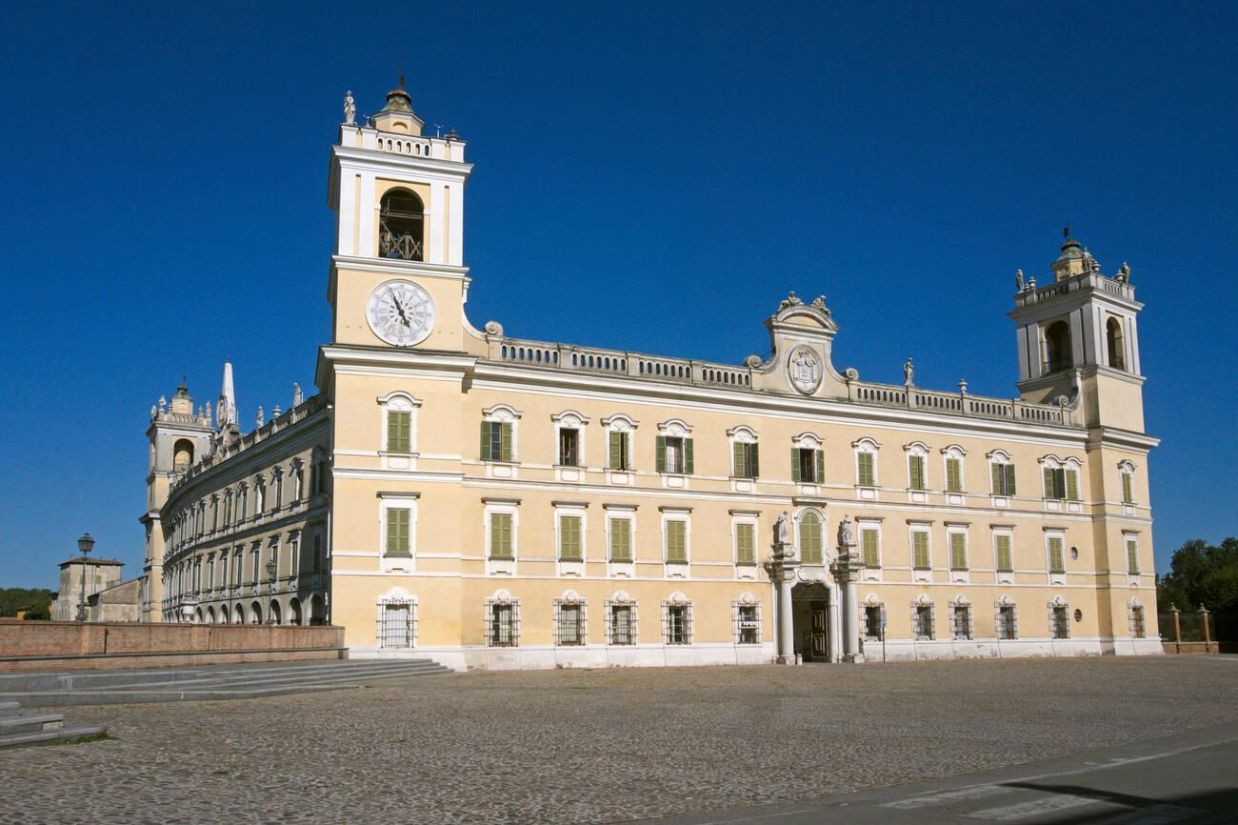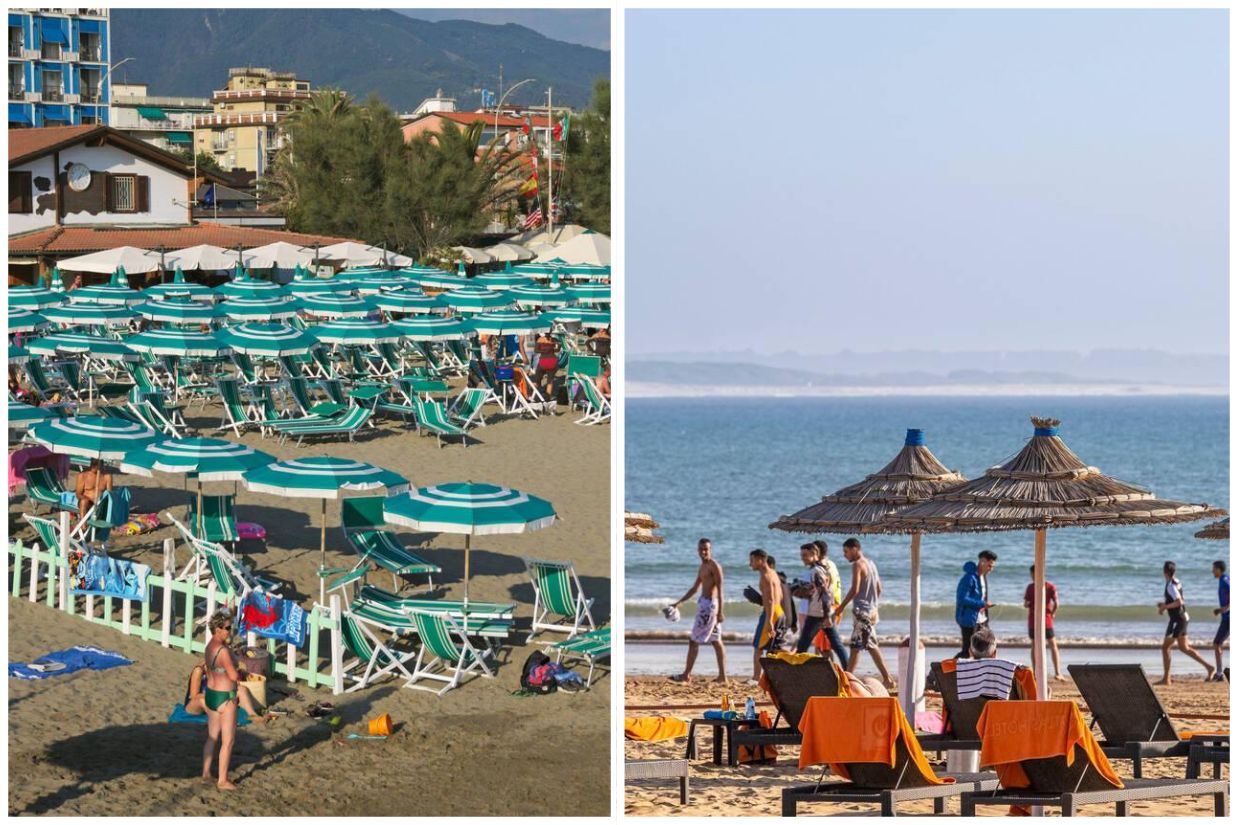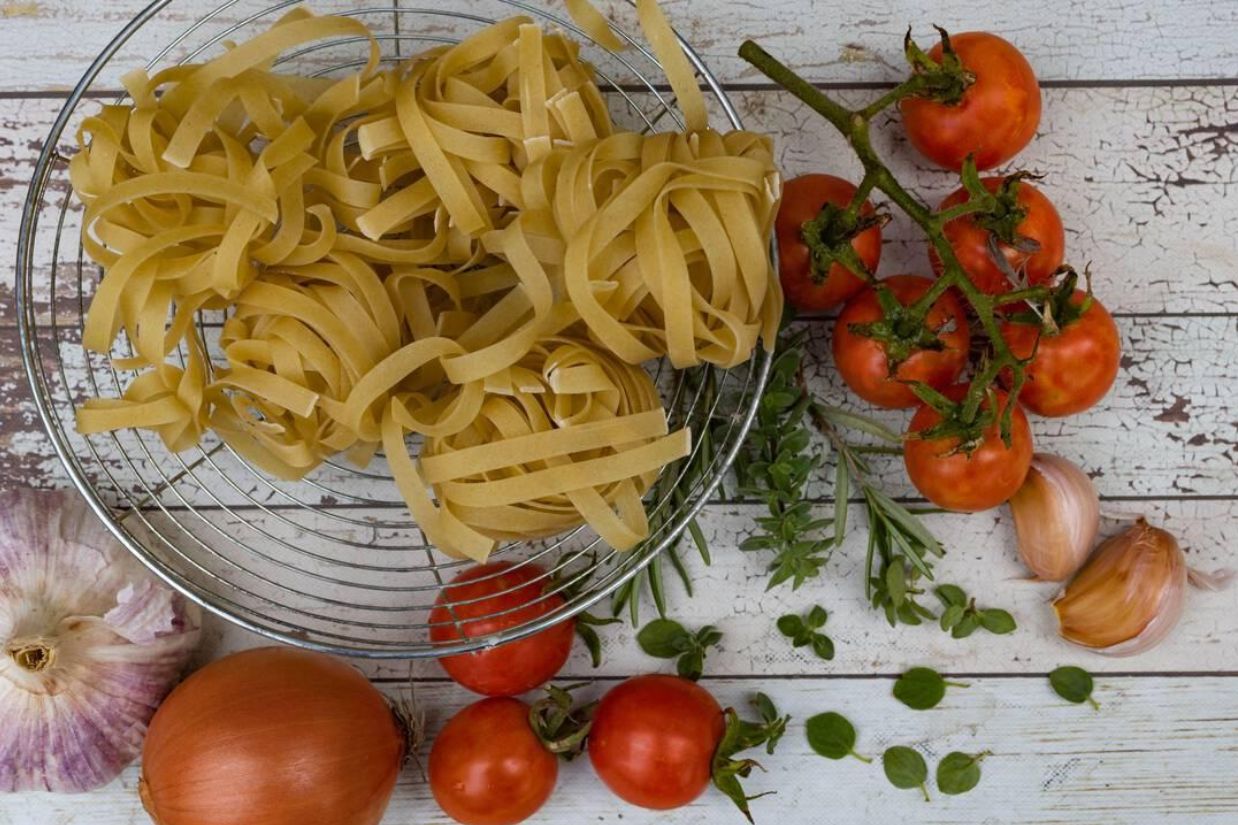The hidden treasures of Massa captivated me from the moment I stepped foot in this Tuscan gem. The city’s rich industrial heritage tells a fascinating story that connects marble railways to medieval castles.
The Marble Railway, built after Italian unification between 1871 and 1890, revolutionized the transportation of the region’s precious stone, which has roots dating back to Roman times.

Walking through Massa feels like traveling through different eras. The medieval castle stands as a testament to the wealth generated from the marble industry. I was struck by how this natural resource shaped not just the economy but the entire cultural landscape of the area.
My exploration of Massa revealed how industrial innovations like the railway system transformed this once-medieval city into an important marble production hub.
The contrast between the ancient stone castles and the industrial railway creates a unique heritage landscape that few other places in Tuscany can match. This blend of medieval architecture and industrial ingenuity makes Massa a must-visit for anyone interested in Italy’s rich historical tapestry.
Journey Through the Stones: Marble Quarries of Massa
The marble quarries of Massa and nearby Carrara represent a fascinating blend of natural wonder and industrial heritage. These ancient quarries have supplied some of the world’s most famous sculptures and buildings with gleaming white stone for centuries.
Exploring the Carrara Marble Quarries
I discovered that the Carrara marble quarries are truly a must-see attraction when visiting the Riviera Apuana region. These impressive quarries produce the world-renowned white stone that Michelangelo chose for his masterpieces.
During my visit, I joined a guided tour on a Land Rover that took us deep inside the marble caves. The experience was both thrilling and educational. Our friendly local guide explained the extraction techniques that have evolved over centuries.
What surprised me most was learning these quarries are themselves tourist attractions. The massive white walls of marble create an otherworldly landscape that’s simply breathtaking.

Many tours offer the chance to see skilled artisans at work, transforming rough blocks into polished treasures.
Evolution of Marble Industry
The marble industry has shaped the identity of Massa and Carrara for centuries. In the 19th century, the region saw significant developments with the construction of a dedicated port for shipping marble.
This port was later connected to the Avenza railway station, creating an efficient transport system for the heavy stone. This infrastructure improvement revolutionized the marble trade.
I was fascinated to learn about the blend of traditional and modern extraction methods still used today. While some techniques date back centuries, technology has made the process safer and more efficient.
The marble industry has left an indelible mark on local culture too. Many families have worked in the quarries for generations, creating a unique heritage and knowledge base.
Castles in Time: Massa’s Medieval Majesty
Massa’s medieval heritage stands as a testament to its rich history, with impressive structures that have witnessed centuries of change while maintaining their stately presence.
The Historic Centre and Ducal Palace
Walking through Massa’s historic centre feels like stepping back in time. The narrow, winding streets lead me to the impressive Ducal Palace, a structure that commands attention with its Renaissance architecture.
Built for the Cybo-Malaspina family in the 16th century, the palace stands as the heart of old Massa. I’m always struck by its elegant façade and the way it dominates the central Piazza Aranci.
Inside, the ornate halls and chambers reveal the wealth and power of Massa’s former rulers. The detailed frescoes and grand staircases tell stories of lavish celebrations and important diplomatic meetings that once took place here.

Today, the palace serves as both government offices and a cultural center, hosting exhibitions that connect visitors to Massa’s past.
Castello Malaspina: A Window to the Past
Perched high above the city, Castello Malaspina offers me breathtaking views and a profound connection to medieval times. This impressive fortress dates back to the 10th century, though much of what I see today was rebuilt in the 15th century.
The castle’s strategic position wasn’t chosen by accident. From here, the Malaspina family could control the surrounding territory and important trade routes. Its thick stone walls and imposing towers were designed for defense, protecting the city from potential invaders.
As I explore the castle grounds, I notice how it evolved from a simple wooden stockade to the massive stone fortress it became. The castle’s architecture reveals layers of history, with each addition reflecting changing military needs and architectural styles.

The restored rooms now house a museum of local history, displaying artifacts that help me imagine life within these walls centuries ago.
Nature’s Embrace: Trekking the Apuan Alps and Alpi Apuane Park
The Apuan Alps offer some of the most breathtaking landscapes I’ve encountered in Tuscany. This spectacular mountain range, part of UNESCO’s Geoparks network since 2011, stretches between Massa, Versilia, Garfagnana, and Lunigiana.
Hiking Trails and Sightseeing Tours
I’ve found the trails in Alpi Apuane Regional Park perfect for hikers of all levels. The park features a network of well-marked paths that wind through marble quarries and climb to rocky peaks with panoramic views.
The guided mountain trekking tours here are particularly worth booking. On my last visit, I joined a day-long excursion that showcased both the natural beauty and industrial heritage of the region.
The most popular routes include paths that offer great views of the Carrara marble quarries. These trails tell the story of the area’s famous marble production while providing stunning vistas of the surrounding mountains.

For beginners, I recommend the shorter loops near the visitor centers. More experienced hikers will love the challenging terrain that switches between spectacular peaks and rocky arches.
Flora and Fauna of the Apuan Alps
The Apuan Alps boast an impressive biodiversity that changes with elevation. In spring, I’ve walked through meadows carpeted with wildflowers in vibrant purples, yellows, and whites.
The park’s unique geography creates microclimates that support rare plant species not found elsewhere in Tuscany. Look for alpine flowers clinging to rocky outcrops and Mediterranean scrub in the lower elevations.
Wildlife spotting adds excitement to any trek. I’ve been lucky enough to glimpse mountain goats navigating seemingly impossible terrain with ease. Birdwatchers should bring binoculars – eagles and falcons soar overhead on thermal currents.
The contrast between rugged mountain peaks and lush valleys makes for dramatic scenery. During my hikes, I’ve discovered hidden caves and crystal-clear mountain streams perfect for a refreshing break.
Beaches and Beyond: Discovering Massa and Marina Di Massa
The coastal treasures of Massa extend beyond its famous marble quarries to beautiful sandy beaches and charming seaside towns. I discovered both relaxation and cultural wonders along this stunning stretch of the Tuscan coast.

Coastal Charms of Marina Di Massa
Marina di Massa offers some of the most beautiful beaches I’ve found in Tuscany. The wide sandy shores stretch for miles, with clear blue waters perfect for swimming from late spring through early fall.
What surprised me most was how family-friendly these beaches are. Many offer both free public areas and private beach clubs where you can rent umbrellas and loungers for the day.
I loved exploring the waterfront promenade lined with gelaterias, seafood restaurants, and casual cafés. The evening passeggiata (stroll) along the shore became my favorite daily ritual.
The town itself has a relaxed atmosphere that perfectly balances tourism with authentic Italian coastal living. I found accommodation options ranging from luxury beachfront hotels to affordable vacation rentals.
Cultural Excursions to Cinque Terre and Liguria
Marina di Massa makes an excellent base for exploring the nearby UNESCO World Heritage site of Cinque Terre. These five colorful fishing villages perched on rocky cliffs are just a short train ride away in neighboring Liguria.
I recommend taking a day trip to explore at least two or three of these picturesque villages. Vernazza and Manarola were my personal favorites with their vibrant buildings and stunning sea views.
The hiking trails connecting these villages offer breathtaking coastal panoramas. Even the less challenging routes reward you with unforgettable vistas of the Italian Riviera.
For a less crowded experience, I also enjoyed exploring the nearby Ligurian towns like Portovenere and Lerici. These gems offer similar beauty without the tourist crowds of Cinque Terre.

Shore excursions from Marina di Massa can be easily arranged through local tour operators who provide transportation and guided experiences to make the most of your visit.
Taste of Tuscany: Local Cuisine and Wine
Massa’s culinary scene blends traditional Tuscan flavors with unique coastal influences, creating a food landscape that’s both authentic and distinctive. The region’s vineyards and local trattorias offer visitors a genuine taste of Tuscan life beyond the famous marble industry.
Day Trips for Foodies: From Wineries to Trattorias
I discovered that the countryside surrounding Massa offers incredible food-focused excursions. The nearby Chianti region is perfect for wine enthusiasts, with vineyards nestled among rolling hills where you can sample robust reds paired with local cheeses.
Many vineyards offer guided tours where I learned about traditional winemaking techniques that have been used for generations. The passionate winemakers often share family stories while pouring generous tastings.
For a complete experience, I recommend the small group tours that combine visits to olive groves and vineyards with farm-to-table dining experiences. These typically last 4-6 hours and include transportation from Massa Centro.
The charming town of Lucca, just a short drive away, features excellent trattorias tucked into medieval streets where you can enjoy authentic pasta dishes after exploring historical sites.
Sampling the Authentic Flavors of Massa
Massa’s cuisine wonderfully combines Tuscan traditions with seafood specialties from its coastal location.
In Massa Centro, I found family-run restaurants serving dishes like tordelli. Tordelli is a meat-filled pasta with ragù. They also serve baccalà alla massese, a salt cod prepared with local herbs.
The local markets burst with seasonal produce, fresh cheeses, and cured meats.
Wednesday and Saturday mornings are best for visiting the central market. This is where farmers sell their produce directly.
For a truly immersive experience, I joined a cooking class. In the class, I learned to prepare traditional dishes using marble-carved mortars—a lovely nod to the region’s heritage.

Don’t miss trying the region’s signature dessert, torta di riso. This rice cake is perfectly paired with local sweet wines like Vin Santo.
Many cafés in Massa Centro serve this delightful combination as an afternoon treat.

